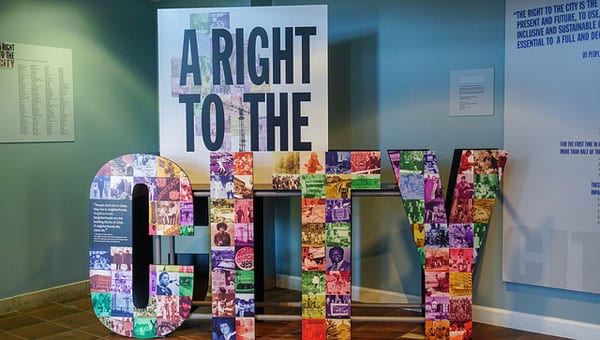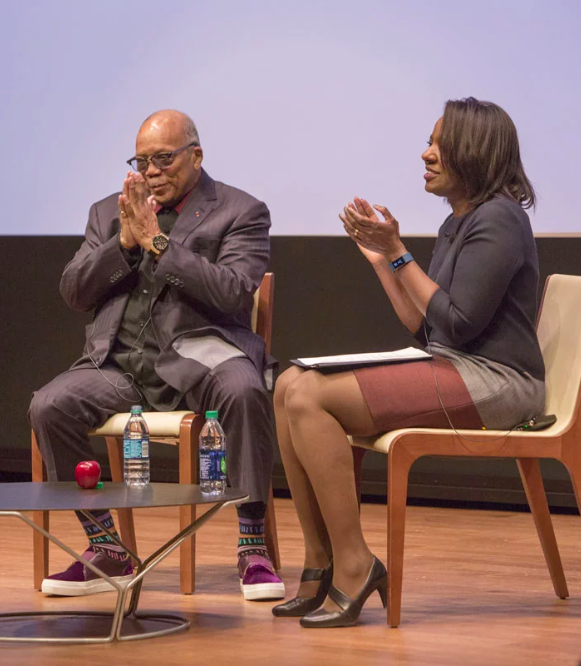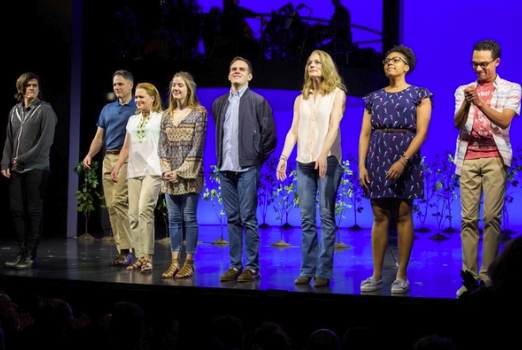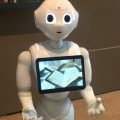ICYMI: Highlights from the week that was Nov. 25 – Dec. 1, 2018
No one can keep up with everything, so let us do it for you. We’ll gather the top Smithsonian stories from across the country and around the world each week so you’ll never be at a loss for conversation around the water cooler.
Art museums are offering special tours for the visually impaired but are some exhibits becoming a little too personal?

The Night of the Gingko Lets Us Watch Climate Change in Real Time
Fall becomes winter overnight with this amazing tree.
Mother Jones, November 26

VCG/VCG via Getty Images
This story was originally published by Slate and appears here as part of the Climate Desk collaboration.
A gingko tree stands outside my bedroom window in Brooklyn. For seven months a year, I see nothing but leaves and sky; at night, the fan-shaped leaves cast flickering shadows on my walls. In October, the leaves turn the brilliant, luminous yellow of a stoplight. And then, one night—this year it was on Thursday—all the leaves fall, blanketing the sidewalk and cars below in gold. The houses across the street rush into view, where they’ll stay until new leaves bud.
Oliver Sacks called this phenomenon the “Night of the Gingko.” Compared with the slow decline of its deciduous neighbors, the gingko’s rapid defoliation appears to be unnatural. Fall becomes winter overnight. The same night my gingko lost its leaves, a record-breaking fall snowstorm caught the rest of New York’s trees by surprise, loading their leafy boughs up with snow. All night, branches came crashing down in the street, overwhelmed by the combined weight of two substances that rarely touch. Read more from Henry Grabar for Mother Jones.
Smithsonian and AIAS Will Honor ‘Spacewar!’ Creators With Pioneer Awards
Variety, November 26

The Academy of Interactive Arts & Sciences is honoring the creators of “Spacewar!” with Pioneer Awards during an upcoming event hosted by the Smithsonian National Museum of American History.
The Pioneer Awards are given to individuals whose work has “helped shape and define the interactive entertainment industry.” Dan Edwards, Martin “Shag” Graetz, Steven Winer, Steve “Slug” Russell, Peter Samson, Robert Sanders, and Wayne Wiitanen will meet to discuss how they created “Spacewar!” in their spare time while working with MIT’s first PDP-1 computer. The talk will be moderated by Bethesda Softworks’ founder, Christopher Weaver, as the group chats about how computer technology has changed over the past half-century. Read more from Brittany Vincent for Variety.
Museums, Neighborhoods, and Gentrification: Lessons from the Nation’s Capital
Nonprofit Quarterly, November 26

A Right To The City, Smithsonian Anacostia Community Museum, Washington, DC, (Photo by Ted Eytan)
For the first time in human history, more than half of the world’s population lives in cities, a shift that is resulting in new challenges. The Smithsonian Institution’s Anacostia Community Museum, with its 50th anniversary exhibition, A Right to The City, addresses many of these in the context of its home city of Washington, DC.
Examining six city neighborhoods—three in the city’s northwest quadrant (Adams Morgan, Chinatown, and Shaw) and three from the city’s three other quadrants (Brookland in Northeast, Southwest, and Anacostia in Southeast)—the exhibition takes a close look at how ordinary Washingtonians have helped to “shape and reshape their neighborhoods.” Read more from Anne Eigeman for NonProfit Quarterly
Celebrate American Innovation at the Smithsonian Ingenuity Festival
The events over these ten days will help you feel a little more hopeful about America’s future.
Washingtonian, November 26

Dwandalyn Reece interviews Quincy Jones at the 2017 Ingenuity Festival. Photograph by Michael R. Barnes.
Rock stars meet rocket scientists at the second annual Smithsonian Ingenuity Festival, a series of sessions celebrating American innovation from November 29 to December 9. The festival aligns with the Smithsonian’s seventh annual American Ingenuity Awards.
“It’s about getting inspiration and from all different places. That’s what we are. We’ve got art museums, we’ve got science museums, we believe in social progress and diversity,” says Michael Caruso, the editor of Smithsonian magazine who created the event. “It’s this fantastic cross section of creativity. And there’s just a lot of cross pollination that happens.” Read more from Daniella Byck for Washingtonian.
Photo Coverage: DEAR EVAN HANSEN Celebrates Two Years On Broadway With Donation to the Smithsonian
Broadway World, November 28

The cast of “Dear Evan Hansen.” Photo by Jennifer Broski
Yesterday, Dear Evan Hansen celebrated two years on Broadway by donating to the Smithsonian on stage. The cast and creative team were joined by Smithsonian Institution representatives, Catherine Eagleton, Associate Director of Curatorial Affairs and Ryan Lintelman, Curator of Entertainment History.
BroadwayWorld was there to celebrate with them and you can check out the photos below! Read more from Jennifer Broski for Broadway World.
Ancient toothless whale was forerunner of modern cetacean giants
Reuters, November 29

An illustration showing an artistic reconstruction of a mother and calf of Maiabalaena nesbittae nursing offshore of Oregon during the Oligocene, close to 33 million years ago, in this image provided by the Smithsonian Institution in Washington, U.S., November 29, 2018. Smithsonian Institution/Handout via REUTERS
The researchers described fossils unearthed in Oregon of a whale named Maiabalaena nesbittae that lived 33 million years ago and possessed neither teeth nor baleen, the material that modern filter-feeding whales use to strain large amounts of tiny prey out of the water for food.
They called Maiabalaena, meaning “mother whale,” a surprising intermediate evolutionary stage between modern baleen whales and their toothed ancestors. Maiabalaena consumed fish and squid by sucking them into its mouth. Read more from Will Dunham for Reuters.
This museum wants your fingerprint and heart rate for the sake of art. Will people actually do it?
The Washington Post, November 29

A volunteer walks past a gallery of fingerprints in the “Pulse Index” room, the first of three installations in “Rafael Lozano-Hemmer: Pulse” at the Hirshhorn. (Shawn Thew/EPA-EFE/REX/Shutterstock)
When I log on to my computer, I’m used to seeing requests for two-factor authentication or notifications regarding updated privacy policies. But seeing a disclaimer about the security of my personal data on the walls of the Hirshhorn? That gave me pause.
I was walking into “Rafael Lozano-Hemmer: Pulse,” where the artwork is powered by visitors’ fingerprints and heartbeats. Hand sensors and finger scanners collect the varying rhythms of visitors’ pulses, which are then visualized in the exhibition. Graphic ripples of water, dramatic amplified sounds and a minimalist network of hanging blinking lights all depict the universal equalizer, the heartbeat. Read more from Elizabeth Hart for The Washington Post.
Smithsonian offers tours for visually impaired
WJLA-ABC7, November 30
The Smithsonian American Art Museum is offering ways for people with different abilities to explore and enjoy the artwork, history and culture in Washington D.C. Docent-led tours for the visually impaired are opening new opportunities for locals.
People from all over the world travel to the Nation’s Capital. So far, more than two million visitors this year from around the world have walked the halls of the American Art Museum and got a peek in to the lives of Americans past and present. Some residents felt they were not able to enjoy the venue like everyone else. Read more from Victoria Sanchez for ABC 7.
Posted: 2 December 2018






